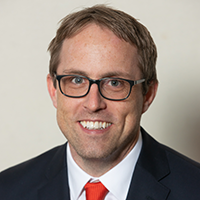
You’ll Never Guess Where BB&T Gets Its Big Ideas
 It is well worth any banker’s time to read the vision, mission and purpose statements of BB&T, the eighth biggest commercial bank in the United States.
It is well worth any banker’s time to read the vision, mission and purpose statements of BB&T, the eighth biggest commercial bank in the United States.
They will sound at first like similar statements from any other bank, but what makes BB&T’s unique is the inspiration behind them.
They weren’t drawn up with the help of consultants or survey data; they are grounded instead in the writings of philosophers—classical thinkers as well as modern proponents of capitalism.
“The philosophers that influenced me the most are Aristotle, Thomas Aquinas, John Locke, and Ayn Rand,” writes John Allison, the chairman and CEO of BB&T from 1989 to 2008, in his 2014 book, The Leadership Crisis and the Free Market Cure.
BB&T has published an entire pamphlet outlining its culture, encapsulated in its vision, mission and purpose statements, which reduce to one key objective: “Our ultimate purpose is to create superior long-term economic rewards for our shareholders.”
The $223-billion bank based in Winston-Salem, North Carolina, doesn’t just talk the talk; it walks the walk. It ranks in the 98th percentile among publicly traded banks in terms of the total amount of shareholder value it has created during its time as a public entity.
Yet, there’s a nuance to BB&T’s philosophy on creating value that’s easy to overlook. It doesn’t talk about “maximizing” long-term economic rewards for shareholders; it talks instead about “optimizing” those rewards.
Why the difference?
As Allison writes in his book:
When free market economists and finance theorists refer to maximizing shareholders’ returns, they imply a long-term context. In the real world, maximizing tends to be a short-term concept. BB&T’s mission also focuses on ‘creating a safe and sound investment,’ The goal with this wording is to communicate to potential purchasers of the company’s stock that we are in the game for the long-term and will not take inordinate risk even if that risk could maximize short-term returns.
In no industry is a long-term view more important than banking. Banks, as a group, use more leverage than companies in any other industry, typically borrowing $10 for every $1 worth of capital.
This is by design, of course, as a principal purpose of banking is to leverage society’s capital to fuel economic growth—a point Bank of America’s chairman and CEO, Brian Moynihan, made in a recent interview with Bank Director:
[B]anks came up to help people borrow money, which helps economies grow faster. If you’re constrained to only your equity, you only have so much money to spend. But if you borrow against it, now you can spend more. That’s the magic of leverage in terms of accelerating progress.
But there is a downside to all that leverage—it makes banks vulnerable to economic cycles, explaining why more than 17,000 banks have failed since the Civil War.
Bankers are prone to the same impulses that, at the top of a cycle, cause real estate developers to break ground on skyscrapers, retailers to over-invest in inventory and technology entrepreneurs to believe that traditional rules of economics no longer apply.
The difference is that, thanks to leverage, there’s less margin for error in banking than there is in other industries. A mere 10 percent decline in the value of a typical bank’s assets will render it insolvent.
This is one reason BB&T chose the words of its mission statement so carefully in terms of “optimizing” as opposed to “maximizing” shareholder value.
Another reason is that shareholders aren’t a bank’s only constituency—there are also clients, employees and communities. A bank that doesn’t tend to all four is like a table with only three legs.
It’s by optimizing returns among multiple constituencies, in other words, that a bank can maximize the returns to anyone of them. And if a bank does that through multiple cycles, the outcome is even better.
The net result at BB&T, writes Allison, is that “we operate our business in a long-term context by adding value to our clients, employees, and communities and in that context create superior rewards for shareholders.”
In short, while Aristotle, Thomas Aquinas, John Locke and Ayn Rand may seem like an unlikely source for inspiration in banking, if BB&T’s success is any indication, it’s safe to say they were onto something.



